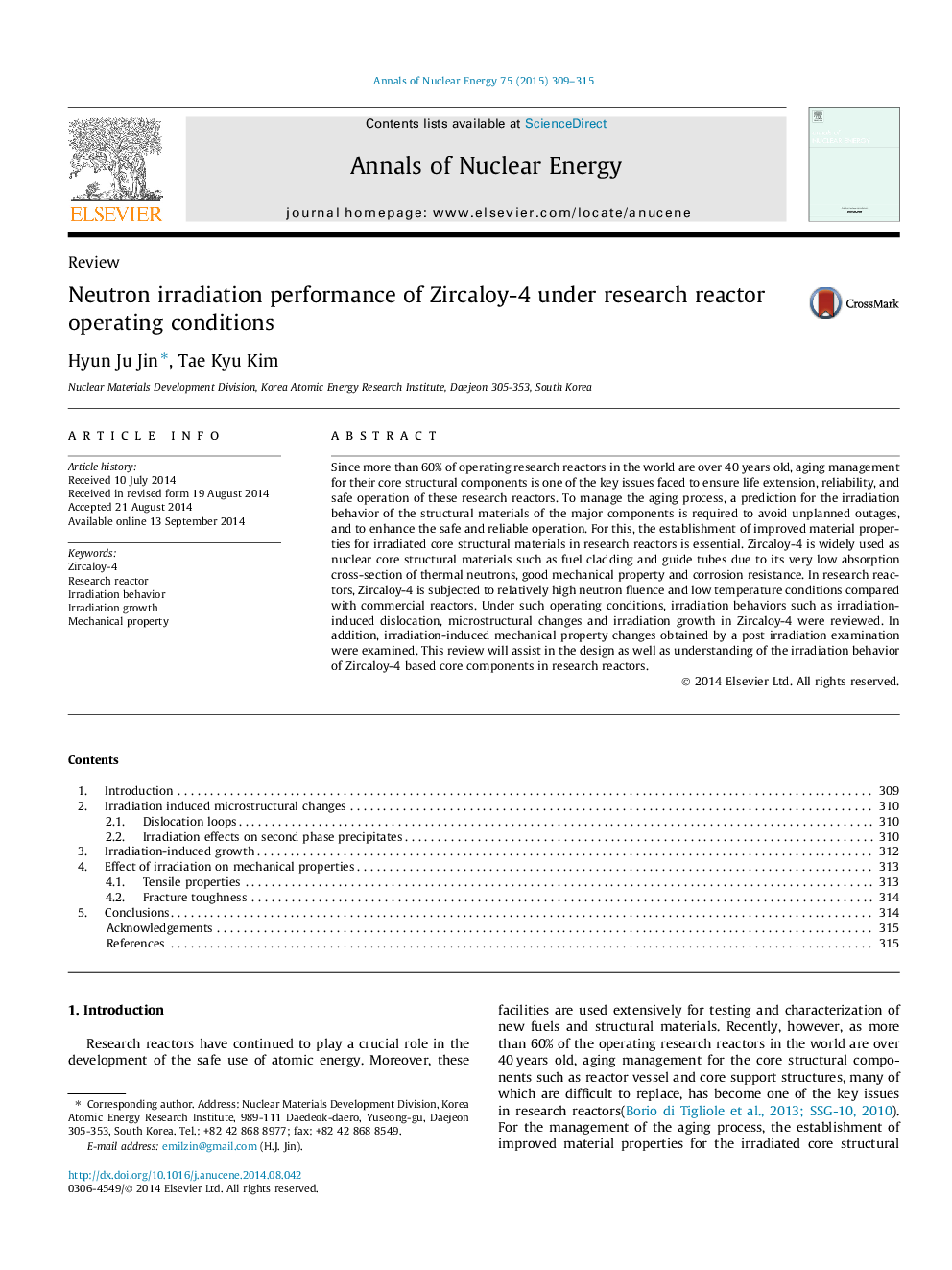| Article ID | Journal | Published Year | Pages | File Type |
|---|---|---|---|---|
| 8069048 | Annals of Nuclear Energy | 2015 | 7 Pages |
Abstract
Since more than 60% of operating research reactors in the world are over 40Â years old, aging management for their core structural components is one of the key issues faced to ensure life extension, reliability, and safe operation of these research reactors. To manage the aging process, a prediction for the irradiation behavior of the structural materials of the major components is required to avoid unplanned outages, and to enhance the safe and reliable operation. For this, the establishment of improved material properties for irradiated core structural materials in research reactors is essential. Zircaloy-4 is widely used as nuclear core structural materials such as fuel cladding and guide tubes due to its very low absorption cross-section of thermal neutrons, good mechanical property and corrosion resistance. In research reactors, Zircaloy-4 is subjected to relatively high neutron fluence and low temperature conditions compared with commercial reactors. Under such operating conditions, irradiation behaviors such as irradiation-induced dislocation, microstructural changes and irradiation growth in Zircaloy-4 were reviewed. In addition, irradiation-induced mechanical property changes obtained by a post irradiation examination were examined. This review will assist in the design as well as understanding of the irradiation behavior of Zircaloy-4 based core components in research reactors.
Related Topics
Physical Sciences and Engineering
Energy
Energy Engineering and Power Technology
Authors
Hyun Ju Jin, Tae Kyu Kim,
